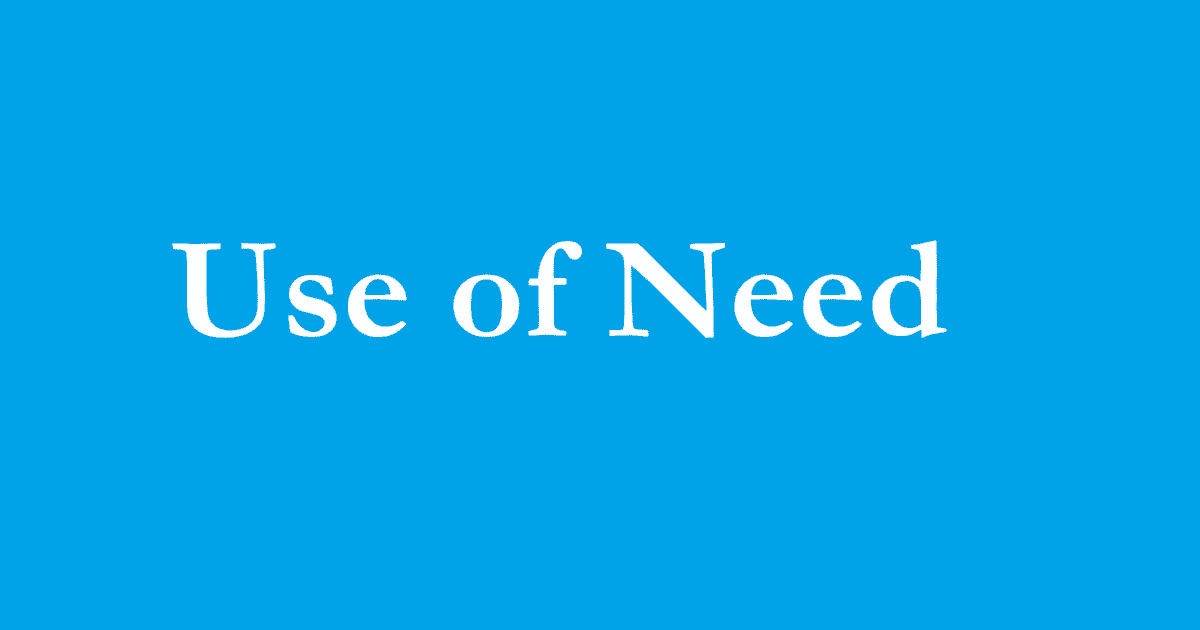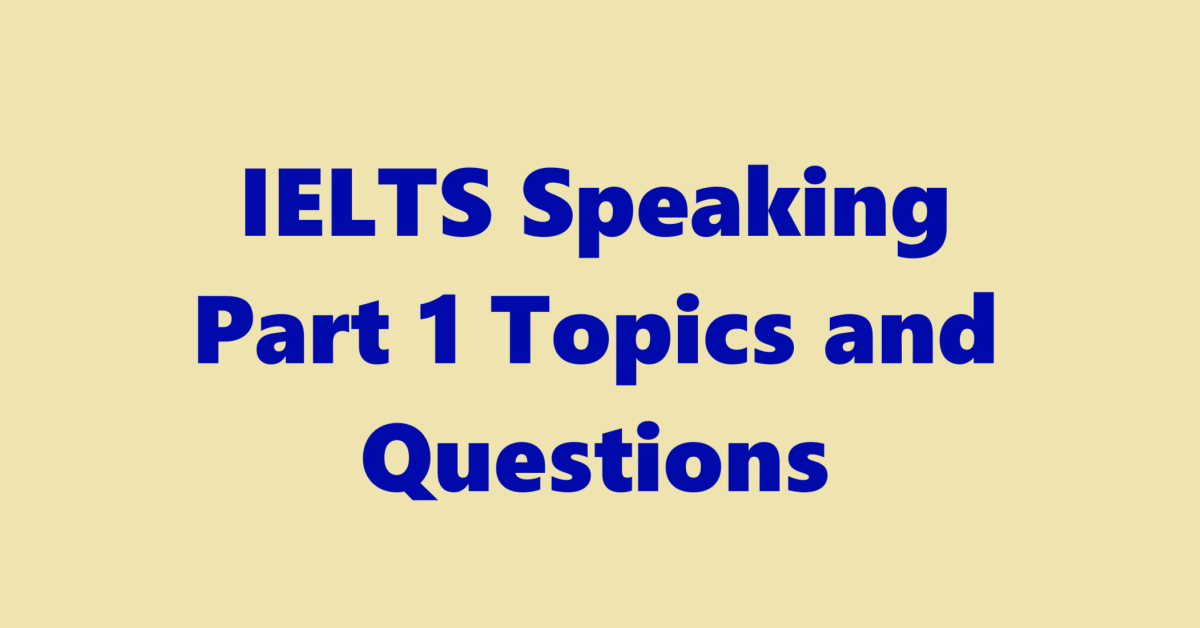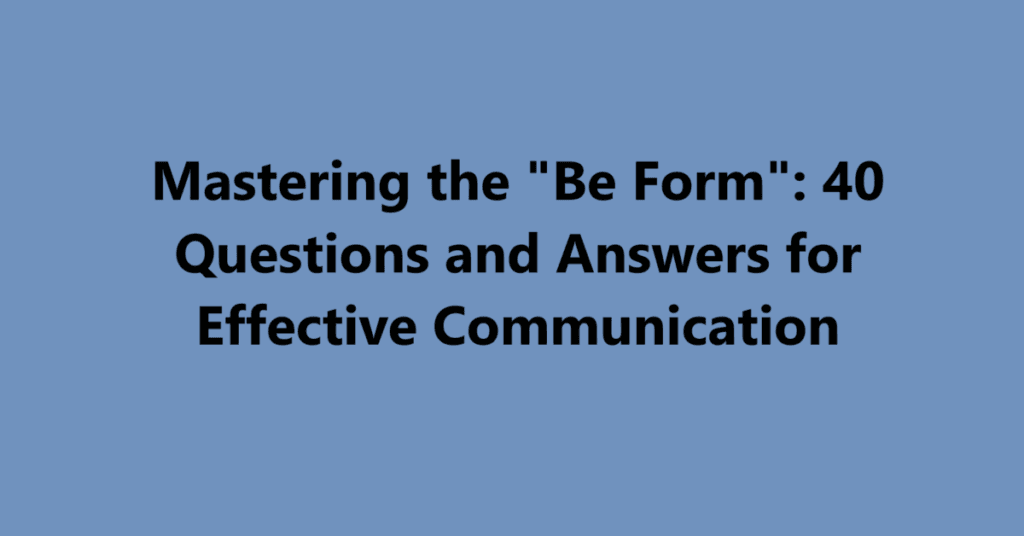Use of need according to English Grammar
Understanding how to use the word need is essential for clear, correct English. “Need” is versatile: it can function as a main verb, a semi-modal/auxiliary verb, and a noun. Each use follows different grammatical patterns and conveys distinct shades of meaning — obligation, necessity, lack, or requirement. This post explains the forms and functions of need, details common constructions (affirmative, negative, interrogative), contrasts between British and American usage where relevant, and highlights frequent errors with corrections and examples.
Contents
- What kind of word is “need”?
- “Need” as a main verb
- Forms and tenses
- Typical sentence patterns
- Examples with direct objects and infinitives
- “Need” as a semi-modal (modal-like) verb
- Negative and interrogative forms
- Use with bare infinitive
- Distinctions from full-verb use
- “Need” as a noun
- Countable vs. uncountable senses
- Typical collocations
- Expressing obligation vs. expressing necessity
- “Need to” vs. modals like “must” and “have to”
- Common errors and how to avoid them
- Style and register: formal vs. informal usage
- Practice exercises (with answers)
- Summary
1. What kind of word is “need”?
The word need can be:
- A main verb (lexical verb) that behaves like other verbs: it takes tense, aspect, auxiliaries (do/does/did), and can have objects. Example: She needs help.
- A semi-modal (sometimes called a modal-like verb) in negative and interrogative contexts, particularly in British English, where it behaves like a modal: it can use a bare infinitive and may not require the auxiliary do. Example: Need you go now? / You needn’t come.
- A noun meaning a requirement or shortage: He has many needs.
Understanding which role need plays in your sentence helps you choose the right form and structure.
2. “Need” as a main verb
When need is a full main verb, it follows regular verb patterns.
Forms and tenses
- Base(V1): need
- Third-person singular(V5): needs
- Past simple(V2): needed
- Present participle/gerund(V4): needing
- Past participle(V3): needed
You form questions and negatives with auxiliary do (in most varieties, especially American English) in the present and past:
- Affirmative: She needs a pencil.
- Negative: She does not (doesn’t) need a pencil.
- Interrogative: Does she need a pencil?
Typical sentence patterns
- need + noun (direct object)
- I need water.
- They need more time.
- need + to-infinitive (when expressing the requirement to perform an action)
- I need to study tonight.
- She needs to speak with the manager.
- need + -ing (in passive or progressive contexts, or in causative senses)
- The car needs washing. (British English frequently uses this; American English often prefers “needs to be washed.”)
- The house needs repainting.
Notes:
- For actions that require something to be done to the object, English uses need + -ing (particularly in British English): “The garden needs watering.” Equivalent passive: “The garden needs to be watered.”
- Some verbs more naturally pair with need + to-infinitive to indicate that the subject must perform an action: “You need to apologize.”
Examples
- Affirmative: He needs two hours to finish the test.
- Negative: He does not (doesn’t) need two hours; he’ll finish faster.
- Question: Does he need two hours?
3. “Need” as a semi-modal (modal-like) verb
In negative and interrogative contexts, especially in British English, need can behave like a modal auxiliary. This usage is more limited and has unique patterns.
Characteristics
- Often appears in negative forms without auxiliary do: “You needn’t worry.” (Equivalent to “You do not need to worry.”)
- May be used in questions directly with the subject: “Need I say more?” (Equivalent to “Do I need to say more?”)
- When used as a semi-modal, it takes a bare infinitive (no “to”) in contracted negative forms historically, but modern usage usually keeps “to” in many contexts. Compare:
- Semi-modal negative: “You needn’t go.” (no to)
- Full-verb negative: “You don’t need to go.” (auxiliary do + to-infinitive)
Typical constructions
- Negative: needn’t + bare infinitive (You needn’t come.)
- Question: Need + subject + bare infinitive? (Need we bring anything?)
- Affirmative: Less common as a semi-modal (usually use full-verb forms like “need to”): “You need come”? — this is archaic or poetic. Modern English uses “You need to come” or “You must come.”
Usage notes
- Semi-modal use is more frequent in British English; in American English, speakers usually use the full-verb pattern with do plus to-infinitive: “You don’t need to come.”
- When forming negatives and questions, the semi-modal form can sound more formal or old-fashioned in contemporary contexts.
- The semi-modal form is followed by a bare infinitive in older patterns, but many native speakers today use “to” anyway; this area admits variation.
4. “Need” as a noun
“Need” can function as a noun meaning necessity, requirement, or a state of being in want.
Countable vs. uncountable
- Uncountable: “Need” used generally — There is an urgent need for clean water.
- Countable: When referring to a specific requirement or a psychological need — The child has several needs.
Common collocations
- in need (of): He is in need of assistance.
- meet a need / meet the need(s): The program meets the needs of local families.
- express a need: She expressed a need for more information.
- fulfill/fulfil a need: The shelter fulfills a critical need.
Examples
- Uncountable: Need drives human behavior.
- Countable: She prioritized the child’s needs.
5. Expressing obligation vs. expressing necessity
“Need” can express necessity, but it is not always interchangeable with modals like “must,” “have to,” or “should.”
Need to vs. must / have to
- Here, need to = describes a requirement or necessity, often perceived as less authoritative and more situational.
- I need to finish this report by tonight. (personal necessity)
- Must = expresses a strong obligation, often from the speaker or a rule.
- You must wear a seatbelt. (legal/strong obligation)
- Have to = external obligation (rules, circumstances).
- I have to report to work at 9 a.m. (work rules)
Differences by nuance:
- Must often feels stronger and more binding than need to.
- Need to can express internal needs or practical necessities without assigning blame or authority.
- Negative forms differ stylistically: “You don’t need to” usually communicates lack of necessity (you may choose not to), whereas “You must not” expresses prohibition.
Examples:
- “You don’t need to come if you’re busy.” (It’s not necessary.)
- “You must not come!” (You’re prohibited from coming.)
Use in advice and suggestions
- “Need to” is commonly used in advice contexts: “You need to see a doctor.”
- For milder suggestions, native speakers often use “should” or “might want to.”
6. Common errors and how to avoid them
- Incorrect: He need to go.
Correct: He needs to go.
Explanation: Use third-person singular “needs.” - Incorrect: Need you a pen? (in most contexts)
Better: Do you need a pen?
Explanation: Use auxiliary “do” in standard contemporary English (American and many formal varieties) for questions when “need” is a main verb. - Incorrect: The car needs wash.
Correct: The car needs washing. / The car needs to be washed.
Explanation: Use the gerund for items needing action or a passive infinitive. - Confusion between obligation and necessity:
Sentence: You must to go.
Correct: You must go. / You have to go. / You need to go.
Explanation: “Must” is a modal and is followed by a bare infinitive (no “to”). - Omitting “to” incorrectly with full-verb “need”:
Incorrect: I need go now.
Correct: I need to go now.
Explanation: When need is a main verb followed by another verb expressing the action required by the subject, use “to” + infinitive. - Overusing semi-modal form in informal American English:
“Needn’t” is less common in American English; prefer “don’t need to” in casual speech.
7. Style and register: formal vs. informal usage
- “Need” as a semi-modal (needn’t, need I…) tends to sound formal, old-fashioned, or British. In everyday American speech, it’s more natural to use “do/does/did” + “need to.”
- Formal/British: You needn’t worry.
- Informal/American: You don’t need to worry.
- “Need to” is neutral and widely used in both spoken and written English for expressing necessity.
- Using “need” as a noun (need, needs) is common in formal reports, social work, business, and policy contexts: “assess community needs.”
8. Practice exercises (with answers)
Practice 1 — Choose the correct form:
- She (need / needs) to submit the form by Friday.
- (Do / Need) you help with the luggage? (American style)
- This coat (needs washing / needs to be washed / needs wash).
- You (don’t need to / needn’t) bring any food. (American or British)
Answers:
- needs — She needs to submit the form by Friday.
- Do — Do you need help with the luggage?
- All first two are correct: needs washing (British preference) / needs to be washed (both). “Needs wash” is incorrect.
- Both are possible; “don’t need to” (American & neutral), “needn’t” (British, more formal/old-fashioned).
Practice 2 — Rewrite the sentences without changing the meaning:
- You must not be late.
-> You need not be late. (less common; changes nuance) OR Better: You must not be late. (“need not” can imply no necessity to be late, so prefer other rephrasing) - The books need to be returned by Monday.
-> The books need returning by Monday.
Answers and notes:
- Exercise 1.1 demonstrates subject-verb agreement.
- Exercise 2.1 shows the nuance differences; avoid substituting “need” for “must” when a strong obligation is intended.
9. Summary
- Need functions as a main verb, a semi-modal, and a noun, and each function follows different grammatical patterns.
- As a main verb: use regular tense forms, form negatives and questions with do (e.g., “Does she need…?”, “She doesn’t need…”), and use “need to” + verb for required actions.
- As a semi-modal: common in negative and interrogative British English (e.g., “You needn’t go,” “Need I say more?”), often followed by a bare infinitive in older forms.
- As a noun: “need” expresses necessity or requirement; use collocations like “in need,” “meet a need.”
- Distinguish between necessity (need to) and obligation (must/have to); register and dialect affect whether to use semi-modal forms like “needn’t.”
Mastering the usage of need improves clarity when expressing requirements, necessities, and obligations. Practice forming sentences in different tenses and voices (active/passive) and pay attention to regional differences (British vs. American) to choose the most natural form for your audience.
Read Also,


